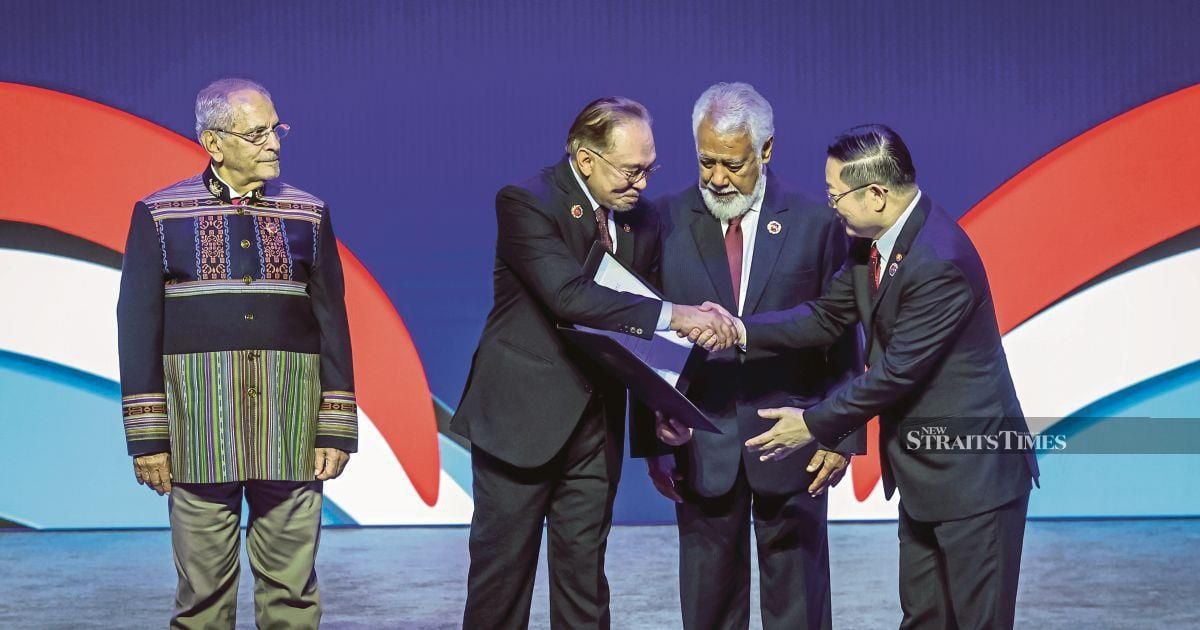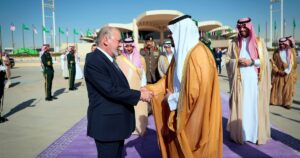AT the just-concluded Asean Summit in Kuala Lumpur, Timor-Leste was admitted as the regional grouping’s 11th member.
Asean operates by consensus, so it was not easy to get all member-countries to agree to Timor-Leste’s admission.
Indonesia was from the outset all for admitting the country that had fought a ferocious battle to break free from the largest Asean member.
Others were not as keen, questioning the smallest country in the region for its readiness to accept all the responsibilities (and privileges) of membership.
To be sure, Timor-Leste has been an outlier in almost all senses. Geographically, it lies closer to the Australian northern coast than to Asean member-states.
Its official language is Portuguese when English is the lingua franca of the grouping. It is thus not surprising that its admission was formalised when Malaysia held the Asean chairmanship.
Traditionally, we have been proactive in seeking to include countries that are geographically part of this region as members of Asean. The challenges for Timor-Leste as the newest member of Asean are daunting.
There are countless meetings year in and out from its annual summit of leaders to meetings of ministers and officials, sector by sector, in the quest for regional integration and harmonisation.
Just being represented, and now even hosting these gatherings, can be a strain on the capacity and resources of the country.
But Timor-Leste has shown itself to be tenacious in wanting to be part of Asean for well over a decade.
It no doubt sees membership as affirmation that it is a country in good standing, striving to fulfil all of Asean’s goals and aspirations. In this, it is also hoping the more established member-states will help it along.
Quite apart from the challenges of integrating itself into Asean, the tasks for Timor-Leste remain more internally focused.
Although it has achieved political stability in recent years under the steady hands of veteran freedom fighters, such as President Jose Ramos Horta and Prime Minister Xanana Gusmao, uplifting the living standards of its over a million people remains a serious challenge.
Although blessed with hydrocarbon reserves, there are fears of how the country will fill its budgetary hole once revenues from this sector run out.
For ordinary people, everyday items are mostly imported.
The logistical challenge of shipping daily necessities across distances from abroad to its miniscule domestic market is not something many enterprising businesspeople will relish.
Perhaps as a result, life in Timor-Leste runs apparently at a rather languid pace.
It needs to seek out areas where it can eke out sustainable modern livelihoods for its youthful population.
Tourism is one area it can consider. Its beaches and tropical landscape can become attractions.
More flights by regional airlines are being mounted into Dili, the capital, including recently from Kuala Lumpur.
But Timor-Leste’s government needs to work on the country’s ease of doing business.
Horror stories such as holiday resort developers having to wait years to get projects started must quickly end.
Its new partners in Asean can help, but Timor-Leste must do its own bit to help itself.
The writer views developments in the nation, region and the wider world from his vantage point in Kuching
© New Straits Times Press (M) Bhd




![Rexy: Skills alone not enough at national badminton trials [WATCH]](https://prwire.my/wp-content/uploads/2025/11/Rexy-Skills-alone-not-enough-at-national-badminton-trials-WATCH-300x158.jpg)

